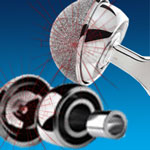A New Study Indicates Metal-On-Metal Implants Have a High Risk of Failure
 A July 2012 study in Orthopedics reports that in hip implants such as the Zimmer Durom Cup, device failure usually occurs within the first two years after implantation.
A July 2012 study in Orthopedics reports that in hip implants such as the Zimmer Durom Cup, device failure usually occurs within the first two years after implantation.
A March 2012 study in the Lancet indicated failure rates for metal-on-metal hip implants two-to-four times higher than implants consisting of other materials and the British Medicines and Healthcare Products Regulatory Agency has advised patients who have the metal-on-metal implant to see their doctors for annual examinations for as long as 15-20 years.
Patients who have experienced problems with Zimmer hip experience such side effects as metal poisoning, instability with the implant, pain, and problems walking. A Zimmer hip lawyer who files a lawsuit after problems with the hip device generally blame the manufacturer for the product’s defects. Plaintiffs filing such a lawsuit allege that Zimmer did not perform adequate tests to determine the device’s safety prior to launching the product.
Metal-on-metal implants can cause infection, problems due to metal insensitivity, or have premature loosening
In the new study, 80 patients who had to undergo revision surgery due to a failed metal-on-metal implant were analyzed. In 78% of patients, revision surgery occurred within two years of implantation and 98% had the implants removed within three years of receiving it.
Almost all of the revisions were necessary because of infection, metal sensitivity, or loosening of the acetabular cup.
In addition, the study said that a major problem with the metal-on-metal implant is the way in which metal contamination has the ability to affect tissues surrounding the hip joint.
Researchers wrote in the article, “Significant metallosis, soft tissue changes, and pseudotumors were observed in a number of patients at the time of revision.”
Plaintiffs in lawsuits claim the hip implant devices were not adequately studied prior to sale
Researchers have concluded that the metal components and complications from them must be studied further before their complications are fully understood.
Metal-on-metal is a device that places a metal ball inside a metal cup. This can raise the risk of metal contamination when the metal pieces rub against each other.
Sales of the Durom cup were suspended in 2008. They re-released the device afterwards with updated surgical instructions.
When filing a Zimmer hip lawsuit, is likely to use the above-referenced study in an effort to prove that the implants were not adequately tested before being released onto the market. Plaintiffs also allege that the Durom Cup was defectively designed, as well as failing to warn patients of the risks with the device.
[SmartLink zimmerhiplawsuit]

